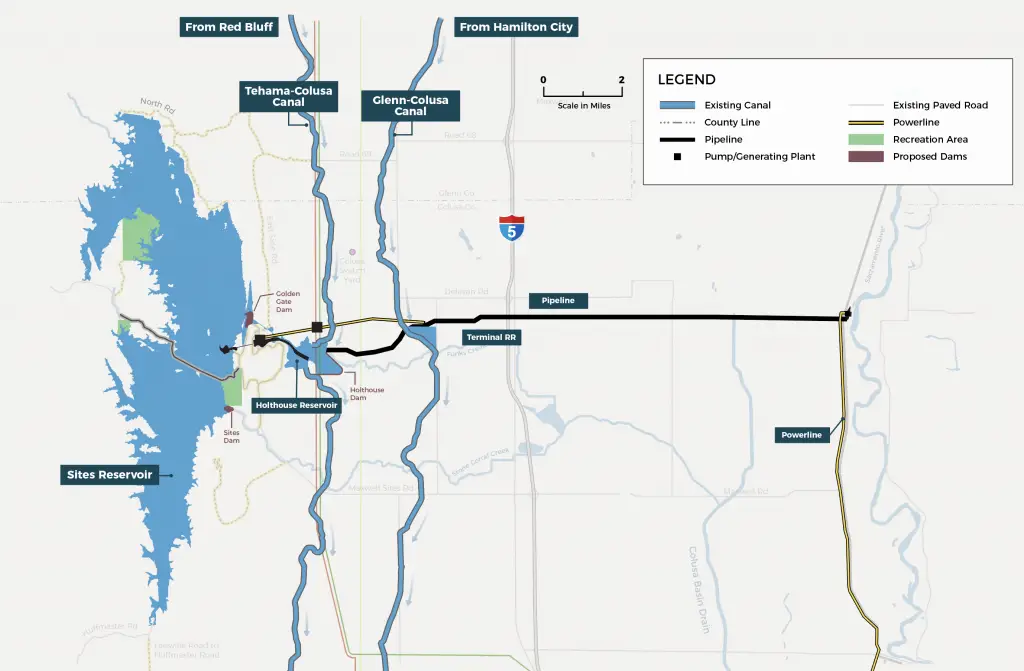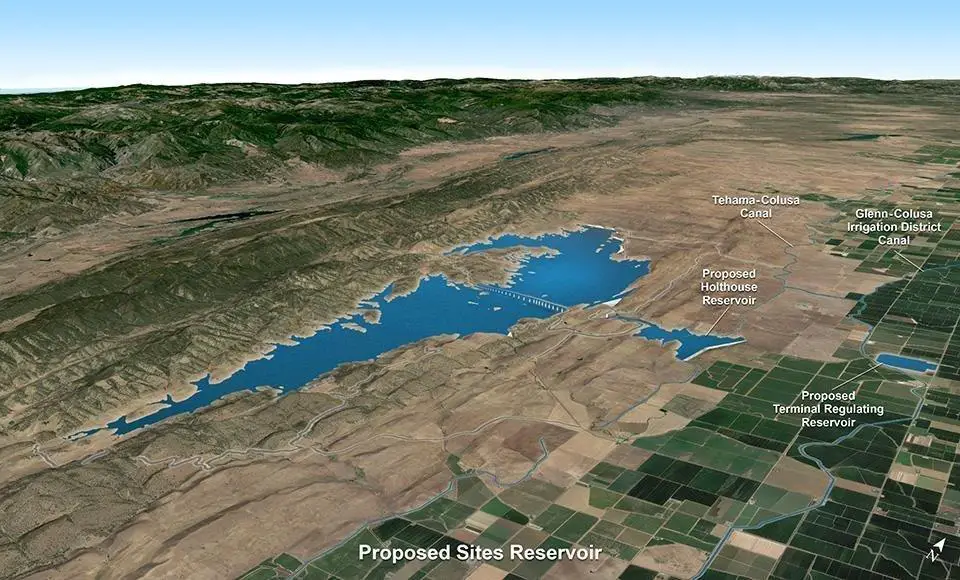Unlocking California’s $4.4 Billion Water Solution: When Will Sites Reservoir Finally Be Completed?

For decades, California has been relying on an extensive reservoir system to provide the majority of its drinking and irrigation water. The Sites Reservoir, a long-planned project in the western Sacramento Valley, has been gaining momentum since 2014 when Prop. 1, a water bond, authorized $2.7 billion for new storage projects.
However, the reservoir is still nearly a decade away, with water rights acquisition, permitting, and environmental review ongoing. Construction, which includes two large dams, is set to begin in 2024, though it may be delayed by a year. The project is expected to be completed by 2030 or 2031.
The Sites Reservoir aims to store up to 1.5 million acre-feet of Sacramento River water, potentially enhancing water supplies for over 24 million people and 500,000 acres of Central Valley farmland. The project’s cost is estimated at $4.4 billion, with Prop. 1 covering up to $875 million and the remaining funds coming from federal loans to water suppliers. The reservoir could have captured 120,000 acre-feet of water during January’s storms, enough to serve about 1.3 million Californians for a year.

Gov. Gavin Newsom has expressed support for the project, and his 2022 water strategy aims to create up to 4 million acre-feet of new water storage space. The Metropolitan Water District of Southern California, a potential investor, could receive up to 20% of the reservoir’s water. Other districts, such as the Coachella Valley Water District, Santa Clarita Valley Water District, and Bay Area residents, might also benefit from Sites’ water.
While the reservoir will likely provide water storage benefits, its impact on the environment remains a topic of debate. Environmental groups oppose the project, fearing it could deplete the Sacramento River and harm endangered fish populations. The environmental review process is ongoing and may conclude this summer.

Advocates argue that the Sites Reservoir is crucial for bolstering California’s water supply, which is increasingly strained by drought, extreme weather, and flooding. With Southern California under pressure to reduce its Colorado River water usage, the importance of Delta water could increase. Sites would add roughly 1.5 million acre-feet to California’s existing 50 million acre-feet of major reservoir storage.
While the Sites Reservoir would contribute a small percentage to California’s overall water supply, it represents significant water resources for certain districts. The Metropolitan Water District, which delivers 1.6 million acre-feet of imported water to 19 million people annually, would receive an additional 50,000 acre-feet from Sites, a 3% increase. The Zone 7 Water Agency, serving 270,000 people in the East Bay, would see a 20% increase in supply with the addition of 10,000 acre-feet from Sites. Zone 7 Water Agency’s General Manager Valerie Pryor highlighted the value of Sites as an appealing option amidst frequent droughts and increasing residential demand.
